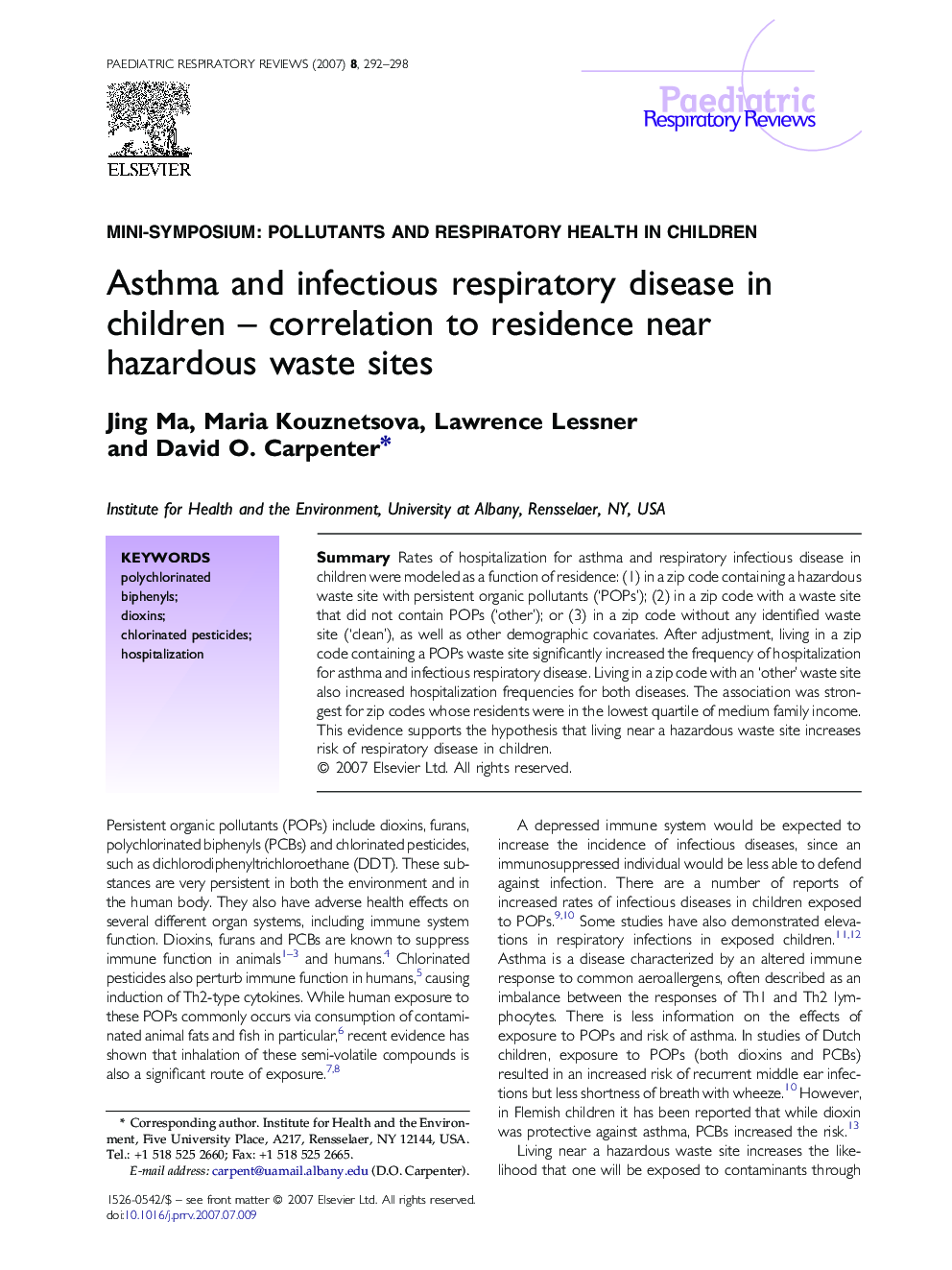| Article ID | Journal | Published Year | Pages | File Type |
|---|---|---|---|---|
| 4171606 | Paediatric Respiratory Reviews | 2007 | 7 Pages |
SummaryRates of hospitalization for asthma and respiratory infectious disease in children were modeled as a function of residence: (1) in a zip code containing a hazardous waste site with persistent organic pollutants (‘POPs’); (2) in a zip code with a waste site that did not contain POPs (‘other’); or (3) in a zip code without any identified waste site (‘clean’), as well as other demographic covariates. After adjustment, living in a zip code containing a POPs waste site significantly increased the frequency of hospitalization for asthma and infectious respiratory disease. Living in a zip code with an ‘other’ waste site also increased hospitalization frequencies for both diseases. The association was strongest for zip codes whose residents were in the lowest quartile of medium family income. This evidence supports the hypothesis that living near a hazardous waste site increases risk of respiratory disease in children.
